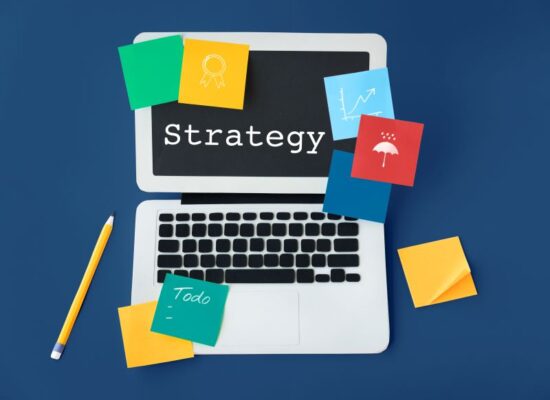Introduction to Content Marketing Strategies
The introduction is the gateway to understanding the entire article. This section will begin by explaining what content marketing is and why it’s vital in today’s business landscape. It will touch on the shift from traditional marketing methods to content-driven approaches, setting the stage for a deeper exploration of how businesses can use content marketing to achieve their goals.
Table of Contents
What is Content Marketing?
This heading will delve into the fundamentals of content marketing, providing a clear and concise definition. It will highlight content marketing as a strategic approach focused on creating and distributing valuable, relevant, and consistent content to attract and retain a clearly defined audience. The section will also cover the history and evolution of content marketing, showcasing how it has grown from simple newsletters and blogs to a comprehensive strategy that includes multimedia content, social media, and more.
The Importance of a Well-Defined Content Marketing Strategy
Here, the article will emphasize why having a well-thought-out content marketing strategy is crucial for any business. It will discuss how aligning your content with business goals can boost brand awareness, establish credibility, and drive customer engagement. This section will also highlight how a clear strategy helps in generating leads and converting them into customers, ensuring that your content efforts are not just creative but also effective and measurable.
Crucial Aspects of an Effective Content Marketing Strategy

This part of the article breaks down the core components that make up a successful content marketing strategy.
Understanding Your Target Audience: Knowing who your audience is and what they care about is the foundation of content marketing. This section will discuss the importance of creating buyer personas—detailed profiles of your ideal customers—and understanding their needs, challenges, and interests.
Setting Clear and Measurable Goals: Content marketing without goals is like setting off on a journey without a destination. This heading will cover how to set SMART goals (Specific, Measurable, Achievable, Relevant, Time-bound) and align them with the different stages of the sales funnel to ensure your content serves a strategic purpose.
Content Planning and Creation: Effective content marketing requires careful planning and consistent execution. This section will discuss the importance of developing a content calendar to organize your efforts. It will also explore the various types of content you can create (like blogs, videos, and infographics) and how SEO plays a critical role in making your content discoverable.
Content Distribution Channels: Creating great content is only part of the equation—you also need to ensure it reaches your audience. This section will explore different distribution channels, including organic methods (like social media and search engines) and paid options (like PPC campaigns). The goal is to help readers understand how to effectively spread their content across multiple platforms.
Measuring and Analyzing Performance: To know if your content marketing strategy is working, you need to measure its performance. This part will explain the key metrics to track, such as engagement, traffic, and conversion rates. It will also highlight tools that can help in analyzing these metrics and discuss the importance of adjusting your strategy based on the data you collect.
Advanced Content Marketing Strategies
This section will introduce more sophisticated strategies for those who are already familiar with the basics.
Repurposing Content: Repurposing allows you to maximize the value of your existing content by transforming it into different formats. This section will provide examples of how to repurpose a single piece of content into various forms (like turning a blog post into a video or infographic), helping you reach different segments of your audience.
Content Personalization: Personalizing content can significantly increase its effectiveness. This heading will explore the importance of tailoring content to individual users’ preferences and behaviors, and offer techniques for implementing personalization in your content marketing efforts.
Leveraging User-Generated Content: User-generated content (UGC) can be a powerful tool for building trust and authenticity. This section will discuss how to encourage your audience to create content related to your brand and how to curate and integrate UGC into your marketing strategy.
Influencer and Partnership Marketing: Collaborating with influencers and forming strategic partnerships can help amplify your content’s reach. This section will explore how to identify the right influencers for your brand, build relationships with them, and create mutually beneficial partnerships that enhance your content marketing efforts.
Frequent Obstacles in Content Marketing and Strategies to Address Them
Content marketing isn’t without its challenges. This section will cover some of the most common obstacles businesses face and offer solutions.
Producing High-Quality Content Consistently: One of the biggest challenges in content marketing is maintaining a steady stream of high-quality content. This section will provide tips on overcoming writer’s block, managing a content team, and ensuring content quality remains high.
Keeping Up with Industry Trends: The digital landscape is always evolving, and staying current is crucial. This heading will discuss the importance of keeping up with changing algorithms, adapting to new content formats (like interactive content), and incorporating emerging technologies into your content marketing strategy.
Conclusion
The conclusion will summarize the key points covered in the article, reinforcing the importance of a well-defined content marketing strategy. It will also provide a brief look into the future of content marketing, touching on emerging trends and technologies that could shape the industry in the coming years.
FAQs
What are the basic steps to developing a content marketing strategy
To develop a content marketing strategy, these are basic steps:
Define Goals: Identify what you want to achieve ( brand awareness, lead generation).
Target Your Audience: Research your target audience’s needs, preferences, and behaviors.
Conduct a Content Audit: Review existing content to assess its performance and gaps.
Develop Content Themes: Outline key topics that align with your audience’s interests and business goals.
Create a Content Calendar: Plan and schedule content to ensure consistent publishing.
Produce and Distribute Content: Develop high-quality content and share it through appropriate channels.
Measure and Analyze: Track performance metrics to assess effectiveness and adjust your strategy as needed.
Written By: MD CHAND ALAM

